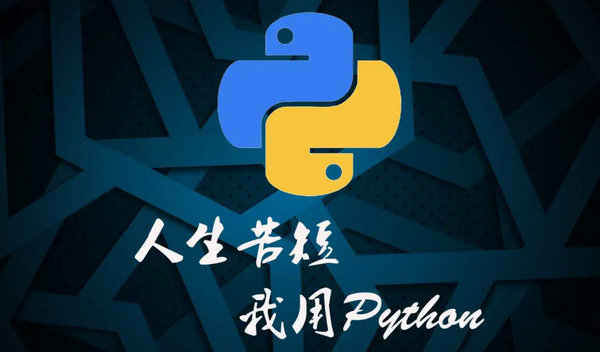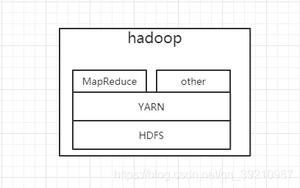Python 装饰器学习
Python装饰器学习(九步入门)

这是在Python学习小组上介绍的内容,现学现卖、多练习是好的学习方式。
第一步:最简单的函数,准备附加额外功能
1 2 3 4 5 6 7 8 | def myfunc():
print("myfunc() called.")
myfunc()
myfunc()
|
第二步:使用装饰函数在函数执行前和执行后分别附加额外功能
1 2 3 4 5 6 7 8 9 10 11 12 13 14 15 16 17 18 | def deco(func):
print("before myfunc() called.")
func()
print(" after myfunc() called.")
return func
def myfunc():
print(" myfunc() called.")
myfunc = deco(myfunc)
myfunc()
myfunc()
|
第三步:使用语法糖@来装饰函数
1 2 3 4 5 6 7 8 9 10 11 12 13 14 15 16 | def deco(func):
print("before myfunc() called.")
func()
print(" after myfunc() called.")
return func
@deco
def myfunc():
print(" myfunc() called.")
myfunc()
myfunc()
|
第四步:使用内嵌包装函数来确保每次新函数都被调用
1 2 3 4 5 6 7 8 9 10 11 12 13 14 15 16 17 18 19 | def deco(func):
def _deco():
print("before myfunc() called.")
func()
print(" after myfunc() called.")
return _deco
@deco
def myfunc():
print(" myfunc() called.")
return 'ok'
myfunc()
myfunc()
|
第五步:对带参数的函数进行装饰
1 2 3 4 5 6 7 8 9 10 11 12 13 14 15 16 17 18 19 | def deco(func):
def _deco(a, b):
print("before myfunc() called.")
ret = func(a, b)
print(" after myfunc() called. result: %s" % ret)
return ret
return _deco
@deco
def myfunc(a, b):
print(" myfunc(%s,%s) called." % (a, b))
return a + b
myfunc(1, 2)
myfunc(3, 4)
|
第六步:对参数数量不确定的函数进行装饰
1 2 3 4 5 6 7 8 9 10 11 12 13 14 15 16 17 18 19 20 21 22 23 24 25 26 | def deco(func):
def _deco(*args, **kwargs):
print("before %s called." % func.__name__)
ret = func(*args, **kwargs)
print(" after %s called. result: %s" % (func.__name__, ret))
return ret
return _deco
@deco
def myfunc(a, b):
print(" myfunc(%s,%s) called." % (a, b))
return a+b
@deco
def myfunc2(a, b, c):
print(" myfunc2(%s,%s,%s) called." % (a, b, c))
return a+b+c
myfunc(1, 2)
myfunc(3, 4)
myfunc2(1, 2, 3)
myfunc2(3, 4, 5)
|
第七步:让装饰器带参数
1 2 3 4 5 6 7 8 9 10 11 12 13 14 15 16 17 18 19 20 21 22 23 24 | def deco(arg):
def _deco(func):
def __deco():
print("before %s called [%s]." % (func.__name__, arg))
func()
print(" after %s called [%s]." % (func.__name__, arg))
return __deco
return _deco
@deco("mymodule")
def myfunc():
print(" myfunc() called.")
@deco("module2")
def myfunc2():
print(" myfunc2() called.")
myfunc()
myfunc2()
|
第八步:让装饰器带 类 参数
1 2 3 4 5 6 7 8 9 10 11 12 13 14 15 16 17 18 19 20 21 22 23 24 25 26 27 28 29 30 31 32 33 34 | class locker:
def __init__(self):
print("locker.__init__() should be not called.")
@staticmethod
def acquire():
print("locker.acquire() called.(这是静态方法)")
@staticmethod
def release():
print(" locker.release() called.(不需要对象实例)")
def deco(cls):
def _deco(func):
def __deco():
print("before %s called [%s]." % (func.__name__, cls))
cls.acquire()
try:
return func()
finally:
cls.release()
return __deco
return _deco
@deco(locker)
def myfunc():
print(" myfunc() called.")
myfunc()
myfunc()
|
第九步:装饰器带类参数,并分拆公共类到其他py文件中,同时演示了对一个函数应用多个装饰器
1 2 3 4 5 6 7 8 9 10 11 12 13 14 15 16 17 18 19 20 21 22 23 24 25 26 27 28 29 30 31 32 33 34 35 36 | class mylocker:
def __init__(self):
print("mylocker.__init__() called.")
@staticmethod
def acquire():
print("mylocker.acquire() called.")
@staticmethod
def unlock():
print(" mylocker.unlock() called.")
class lockerex(mylocker):
@staticmethod
def acquire():
print("lockerex.acquire() called.")
@staticmethod
def unlock():
print(" lockerex.unlock() called.")
def lockhelper(cls):
def _deco(func):
def __deco(*args, **kwargs):
print("before %s called." % func.__name__)
cls.acquire()
try:
return func(*args, **kwargs)
finally:
cls.unlock()
return __deco
return _deco
|
1 2 3 4 5 6 7 8 9 10 11 12 13 14 15 16 17 18 19 20 21 22 23 | from mylocker import *
class example:
@lockhelper(mylocker)
def myfunc(self):
print(" myfunc() called.")
@lockhelper(mylocker)
@lockhelper(lockerex)
def myfunc2(self, a, b):
print(" myfunc2() called.")
return a + b
if __name__=="__main__":
a = example()
a.myfunc()
print(a.myfunc())
print(a.myfunc2(1, 2))
print(a.myfunc2(3, 4))
|
下面是参考资料,当初有不少地方没看明白,真正练习后才明白些:
1. Python装饰器学习 http://blog.csdn.net/thy38/article/details/4471421
2. Python装饰器与面向切面编程http://www.cnblogs.com/huxi/archive/2011/03/01/1967600.html
3. Python装饰器的理解 http://apps.hi.baidu.com/share/detail/17572338
这是在Python学习小组上介绍的内容,现学现卖、多练习是好的学习方式。
第一步:最简单的函数,准备附加额外功能
1 2 3 4 5 6 7 8 | def myfunc():
print("myfunc() called.")
myfunc()
myfunc()
|
第二步:使用装饰函数在函数执行前和执行后分别附加额外功能
1 2 3 4 5 6 7 8 9 10 11 12 13 14 15 16 17 18 | def deco(func):
print("before myfunc() called.")
func()
print(" after myfunc() called.")
return func
def myfunc():
print(" myfunc() called.")
myfunc = deco(myfunc)
myfunc()
myfunc()
|
第三步:使用语法糖@来装饰函数
1 2 3 4 5 6 7 8 9 10 11 12 13 14 15 16 | def deco(func):
print("before myfunc() called.")
func()
print(" after myfunc() called.")
return func
@deco
def myfunc():
print(" myfunc() called.")
myfunc()
myfunc()
|
第四步:使用内嵌包装函数来确保每次新函数都被调用
1 2 3 4 5 6 7 8 9 10 11 12 13 14 15 16 17 18 19 | def deco(func):
def _deco():
print("before myfunc() called.")
func()
print(" after myfunc() called.")
return _deco
@deco
def myfunc():
print(" myfunc() called.")
return 'ok'
myfunc()
myfunc()
|
第五步:对带参数的函数进行装饰
1 2 3 4 5 6 7 8 9 10 11 12 13 14 15 16 17 18 19 | def deco(func):
def _deco(a, b):
print("before myfunc() called.")
ret = func(a, b)
print(" after myfunc() called. result: %s" % ret)
return ret
return _deco
@deco
def myfunc(a, b):
print(" myfunc(%s,%s) called." % (a, b))
return a + b
myfunc(1, 2)
myfunc(3, 4)
|
第六步:对参数数量不确定的函数进行装饰
1 2 3 4 5 6 7 8 9 10 11 12 13 14 15 16 17 18 19 20 21 22 23 24 25 26 | def deco(func):
def _deco(*args, **kwargs):
print("before %s called." % func.__name__)
ret = func(*args, **kwargs)
print(" after %s called. result: %s" % (func.__name__, ret))
return ret
return _deco
@deco
def myfunc(a, b):
print(" myfunc(%s,%s) called." % (a, b))
return a+b
@deco
def myfunc2(a, b, c):
print(" myfunc2(%s,%s,%s) called." % (a, b, c))
return a+b+c
myfunc(1, 2)
myfunc(3, 4)
myfunc2(1, 2, 3)
myfunc2(3, 4, 5)
|
第七步:让装饰器带参数
1 2 3 4 5 6 7 8 9 10 11 12 13 14 15 16 17 18 19 20 21 22 23 24 | def deco(arg):
def _deco(func):
def __deco():
print("before %s called [%s]." % (func.__name__, arg))
func()
print(" after %s called [%s]." % (func.__name__, arg))
return __deco
return _deco
@deco("mymodule")
def myfunc():
print(" myfunc() called.")
@deco("module2")
def myfunc2():
print(" myfunc2() called.")
myfunc()
myfunc2()
|
第八步:让装饰器带 类 参数
1 2 3 4 5 6 7 8 9 10 11 12 13 14 15 16 17 18 19 20 21 22 23 24 25 26 27 28 29 30 31 32 33 34 | class locker:
def __init__(self):
print("locker.__init__() should be not called.")
@staticmethod
def acquire():
print("locker.acquire() called.(这是静态方法)")
@staticmethod
def release():
print(" locker.release() called.(不需要对象实例)")
def deco(cls):
def _deco(func):
def __deco():
print("before %s called [%s]." % (func.__name__, cls))
cls.acquire()
try:
return func()
finally:
cls.release()
return __deco
return _deco
@deco(locker)
def myfunc():
print(" myfunc() called.")
myfunc()
myfunc()
|
第九步:装饰器带类参数,并分拆公共类到其他py文件中,同时演示了对一个函数应用多个装饰器
1 2 3 4 5 6 7 8 9 10 11 12 13 14 15 16 17 18 19 20 21 22 23 24 25 26 27 28 29 30 31 32 33 34 35 36 | class mylocker:
def __init__(self):
print("mylocker.__init__() called.")
@staticmethod
def acquire():
print("mylocker.acquire() called.")
@staticmethod
def unlock():
print(" mylocker.unlock() called.")
class lockerex(mylocker):
@staticmethod
def acquire():
print("lockerex.acquire() called.")
@staticmethod
def unlock():
print(" lockerex.unlock() called.")
def lockhelper(cls):
def _deco(func):
def __deco(*args, **kwargs):
print("before %s called." % func.__name__)
cls.acquire()
try:
return func(*args, **kwargs)
finally:
cls.unlock()
return __deco
return _deco
|
1 2 3 4 5 6 7 8 9 10 11 12 13 14 15 16 17 18 19 20 21 22 23 | from mylocker import *
class example:
@lockhelper(mylocker)
def myfunc(self):
print(" myfunc() called.")
@lockhelper(mylocker)
@lockhelper(lockerex)
def myfunc2(self, a, b):
print(" myfunc2() called.")
return a + b
if __name__=="__main__":
a = example()
a.myfunc()
print(a.myfunc())
print(a.myfunc2(1, 2))
print(a.myfunc2(3, 4))
|
下面是参考资料,当初有不少地方没看明白,真正练习后才明白些:
1. Python装饰器学习 http://blog.csdn.net/thy38/article/details/4471421
2. Python装饰器与面向切面编程http://www.cnblogs.com/huxi/archive/2011/03/01/1967600.html
3. Python装饰器的理解 http://apps.hi.baidu.com/share/detail/17572338
以上是 Python 装饰器学习
Python装饰器学习(九步入门) 的全部内容,
来源链接:
utcz.com/z/386862.html






